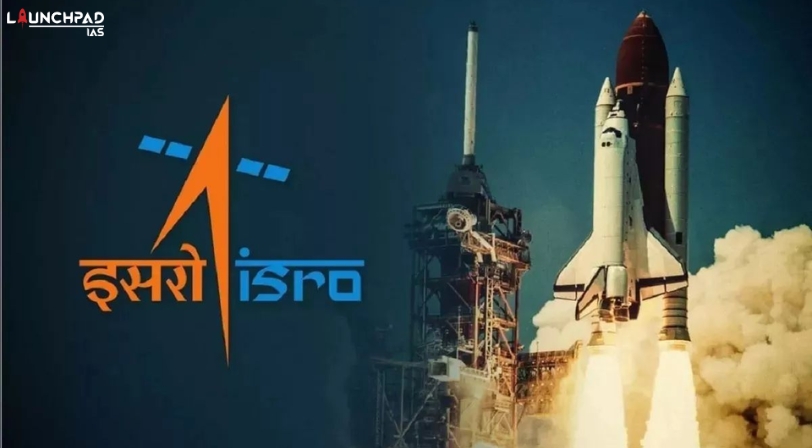What is ISRO?
- ISRO is the space agency under the Department of Space of the Government of India, headquartered in the city of Bengaluru, Karnataka.
- Its vision is to harness space technology for national development while pursuing space science research and planetary exploration.
- Antrix Corporation Limited (ACL) is a Marketing arm of ISRO for the promotion and commercial exploitation of space products, technical consultancy services, and transfer of technologies developed by ISRO.
- Shri S. Somanath is the incumbent chairman of ISRO.
How did ISRO come into Being?
- Space research activities were initiated in India under Dr. Vikram Sarabhai, the founding father of the Indian space program, during the 1960s.
- Since its inception, the Indian space program had three distinct elements such as satellites for communication and remote sensing, the space transportation system, and application programs.
- The INCOSPAR (Indian National Committee for Space Research) was initiated under the leadership of Dr. Sarabhai and Dr. Ramanathan.
- During 1975-76, a Satellite Instructional Television Experiment (SITE) was conducted. It was hailed as ‘the largest sociological experiment in the world’. It was followed by the ‘Kheda Communications Project (KCP)’, which worked as a field laboratory for need-based and locale-specific program transmission in the state of Gujarat State.
- During this period, the first Indian spacecraft ‘Aryabhata’ was developed and was launched using a Soviet Launcher. Another major landmark was the development of the first launch vehicle SLV-3 with the capability to place 40 kg in Low Earth Orbit (LEO), which had its first successful flight in 1980.
- In the experimental phase during 80’s, Bhaskara-I & II missions were pioneering steps in the remote sensing area whereas ‘Ariane Passenger Payload Experiment (APPLE)’ became the forerunner for future communication satellite system.
- During the operational phase in the ’90s, major space infrastructure was created under two broad classes: one for the communication, broadcasting, and meteorology through a multi-purpose Indian National Satellite System (INSAT), and the other for Indian Remote Sensing Satellite (IRS) system. The development and operationalization of the Polar Satellite Launch Vehicle (PSLV) and the development of the Geosynchronous Satellite Launch Vehicle (GSLV) were significant achievements during this phase.
What are the Achievements of ISRO?
Communication Satellites
- Established in 1983 with commissioning of INSAT-1B, the Indian National Satellite (INSAT) system is one of the largest domestic communication satellite systems in the Asia-Pacific region with nine operational communication satellites placed in Geostationary orbit.
- It initiated a major revolution in India’s communications sector and sustained the same later. The INSAT system provides services to telecommunications, television broadcasting, satellite newsgathering, societal applications, weather forecasting, disaster warning, and Search and Rescue operations.
Earth Observation Satellites
- Starting with IRS-1A in 1988, ISRO has launched many operational remote sensing satellites. Today, India has one of the largest constellations of remote sensing satellites in operation.
- Varieties of instruments have been flown onboard these satellites to provide necessary data in a diversified spatial, spectral, and temporal resolution to cater to different user requirements in the country and for global usage.
- The data from these satellites are used for several applications covering agriculture, water resources, urban planning, rural development, mineral prospecting, environment, forestry, ocean resources, and disaster management.
Navigation Satellites
- Satellite is an emerging satellite-based system with commercial and strategic applications. Navigation services are necessary to meet the emerging demands of Civil Aviation requirements and to meet the user requirements of positioning, navigation, and timing based on the independent satellite navigation system.
- To meet the Civil Aviation requirements, ISRO is working jointly with the Airport Authority of India (AAI) in establishing the GPS Aided Geo Augmented Navigation (GAGAN) system.
- To meet the user requirements of the positioning, navigation, and timing services based on the indigenous system, ISRO is establishing a regional satellite navigation system called the Indian Regional Navigation Satellite System (IRNSS).
India’s Manned Mission to Space
- Gaganyaan is a mission by the ISRO scheduled to be launched in 2023. Under this mission:
- Three flights will be sent into orbit.
- There will be two unmanned flights and one human spaceflight.
- The Gaganyaan system module, called the Orbital Module will have three Indian astronauts, including a woman.
- It will circle Earth at a low-earth orbit at an altitude of 300-400 km from Earth for 5-7 days.
- ISRO will also conduct two unmanned ‘Abort Mission’ in 2022 to ensure crew safety during the Gaganyaan mission.
Scramjet (Supersonic Combusting Ramjet) engine
- In August 2016, ISRO successfully conducted the Scramjet (Supersonic Combusting Ramjet) engine test.
- The Scramjet engine uses Hydrogen as fuel and Oxygen from the atmospheric air as the oxidizer.
- This test was the maiden short-duration experimental test of ISRO’s Scramjet engine with a hypersonic flight at Mach 6.
- ISRO’s Advanced Technology Vehicle (ATV), which is an advanced sounding rocket, was the solid rocket booster used for the test of Scramjet engines at supersonic conditions.
- The new propulsion system will complement ISRO’s reusable launch vehicle that will have a longer flight duration.


